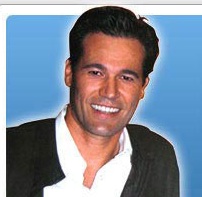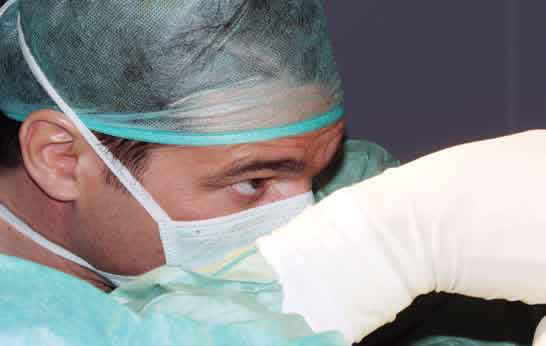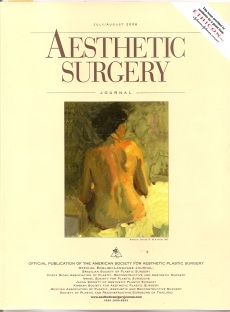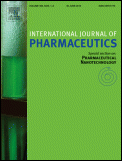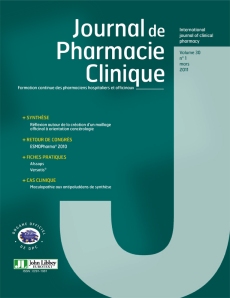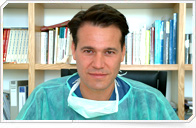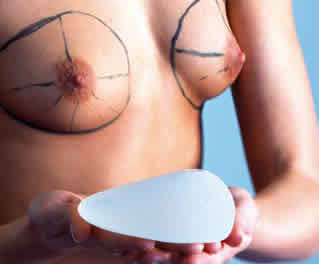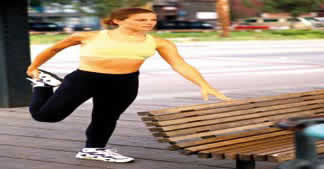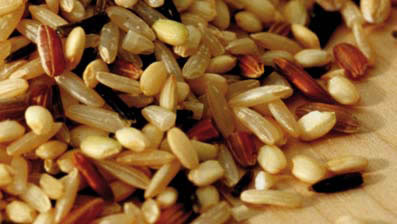Pier (pierre) Albrecht – Marbella Clinic - Biografia
pier (pierre) albrecht
Carrera academica:
El Pier (Pierjean) Albrecht, es un Doctor en Cirugia Especialisando en CirugÃa Plástica y Estética, está registrado en el Ilustre Colegio Oficial de Médicos de la provincia de Málaga con el nº: 2929/07945. Además realiza peritaciones judiciales como experto en CirugÃa Plástica, Reconstructiva y Estética.
El Pier (pierre) Albrecht llevó a cabo su educación en la Facultad de Medicina de las Universidades Louis Pasteur en Strasbourg, Montpellier I,  y en España completó sus estudios en el Departamento de CirugÃa de la Facultad de Medicina de la Universidad de Salamanca.
El Dr. Pier Albrecht ha dedicado una especial atención en su formación a la Rinoplastia (cirugÃa nasal) que llevó a cabo en Guadalajara, México, junto al Profesor Armando Gonzalez.
Dr. Pier Albrecht consiguio el titulo Posgrado “Laser y CirugÃa Plástica†del Departamento de especialidades de la Facultad de Medicina RENE DESCARTES de la Universidad de ParÃs V.
Tras acabar sus estudios de formación especializada en “CirugÃa Avanzada†por el Departamento de CirugÃa de la Universidad de Salamanca (España), Dr. Pierjean (Pier) Albrecht publicó el resultado de sus años de investigación sobre “Los Laser en CirugÃa Cutánea, Dermatológica y Plástica-Estéticaâ€.
Pier (Pierjean) Albrecht terminó su “Doctorado en CirugÃaâ€, Cum Laude, por la Universidad de Salamanca lo que le capacita a impartir clases y a dirigir y supervisar programas médicos de investigación .
Publicaciones Cientificas:
Pier (pierre) Albrecht en quirofano
Pier (Pierjean) Albrecht ha publicado también su trabajo sobre la relacion entre el envejecimiento y el sistema inmunitario en publicaciones cientÃficas francesas e internacionales:
Trans-Inferior Orbital Rim Anchorage and Fascia Roll Multi-Loop Temporal  Anchorage in Midface Rejuvenation.  Pierjean (Pier) Albrecht  Aesthetic Surgery Journal  2006.
Aesthetic Surgery Journal – Pier (pierre) Albrecht
Alloplastic Malar Implants for Aesthtetic Purposes in zone 1. The transconjunctival route.Carnet de resumé. SOFCPRE 2002.  Pierjean (Pier) Albrecht
Congreso Sofcpre 2002 – Pier (pierjean) Albrecht
“Closed Blepharoplasty, the U suture before incisionâ€Â Carnet de resumé. Congress of the SOFCPRE , the French Society for Plastic, Reconstructive and Aesthetic Surgery: . 2002.Dr. Pierjean (Pier) Albrecht
Comparative use of Lasers in Cutaneous Therapy and Plastic-Aesthetic Surgery, These. Doc. Univ., Salamanca. 2001. Pierjean (Pier) Albrecht
Pierjean (pier) Albrecht – Tesis Doctoral
Gliadin Films. I : Preparation in vitro evaluation as a carrier for controlled drug release. Pier (pierjean) Albrecht. Internationnal Journal of Pharmaceutics. 117 – 121 .1995. Elsevier.
International Journal of Pharmaceutics – Pierjean (pier) Albrecht.
Mise en évidence des propriétés antioxydantes d’un L. M.F. dans des dermocosmétiques . Pier (pierjean) Albrecht. Journal.de Pharm.Clinique. 1995.
Journal de Pharmacie Clinique – Pierjean (pier) Albrecht
Comunicaciones en congresos:
Dr. Pier (Pierjean) Albrecht participo a numerosos cursos y congresos como docente.
Estetica y Reconstruccion de los ojos y de la mirada. Symposium de cirugia Plastica, Birkenwerder- Berlin. 2004, Dr. Pierjean (Pier) Albrecht
†Blefaroplastia cerrada, la sutura en U pre-incisionâ€Â Congreso de la SOFCPRE – Sociedad Francesa de Cirugia Plastica, Reparadora y Estetica 2002:Dr. Pierjean (Pier) Albrecht
Alloplastic Malar Implants for Aesthtetic purposes in zone 1. The transconjunctival route. IMCAS. Paris 2002, Dr. Pierjean (Pier) Albrecht
Chirurgie Plastique-Esthétique Faciale et laser. Ecole de Chirugie de Guadalajara. 2002 Dr. Pierjean (Pier) Albrecht
Utilisation des immuncomplexes dans le vieillissement de la peau. Congrès de la Société de Chirurgie Esthétique de Rio De Janeiro, Brésil 1994 Dr. Pierjean (Pier) Albrecht
Intérêt du L.M.F en clinique. Salon de Dermatologie Pratique.Paris 1995
Docencia como Profesor Invitado:
Dr. Pier (Pierjean) Albrecht fue nombrado Profesor Invitado para la “Cirugia Plastica Estetica facial y con laser†en el programa académico de Especialistas en OtorrinolaringologÃa en el Hospital Civil de Guadalajara en Méjico
Universidad de Salamanca:Â
pier (pierjean) albrecht
El Prof.Dr. D. Francisco Javier Garcia Criado, Profesor Titular de CirugÃa y Secretario del Departamento de CirugÃa en la Universidad de Salamanca.

EXPONE:

PRIMERO
: Que  D.Pierjean Albrecht solicita, en el año 1998, a la Universidad de
Salamanca su matriculacion en los estudios de Doctorado. Que según consta en su
expediente, teniendo en cuenta los certificados academicos expedidos y presentados, los estudios de Medicina realizados por D. Pierjean Albrecht en las Facultades de Medicina Francesas de Estrasburgo y Montpellier 1, durante los años de 1981 a 1988, se corresponden, en nivel académico y equivalencia, a los de Licenciatura de Medicina de las Facultades de Medicina de la Universidad Española tal y como exige, en su disposición adicional, el RD 778/1998.

SEGUNDO:
 Que D. Pierjean Albrecht se matriculó en el Programa del Doctorado “Avances en CIrugiaâ€, desarollado en el Departamento de CirugÃa de la Universidad de Salamanca, en el Bienio 1998-2000, siendo Coordinador de dicho programa el Prof.Fransisco Javier Garcia Criado, actuado como su Tutor el Prof. Emiliano Hernandez Galilea y como DIrector de su proyecto de Tesis Doctoral el Prof. AGustin del Cañizo Ãlvarez. Una vez evaluado el Curriculum Vitae de D. Pierjean Albrecht, donde constan, entre otros, certificados sobre su formacÃon clÃnica en diferentes centros de especialidades quirúrgicas a partir del año 1986, su actividad investigadora reflejada porComunicaciones a Congresos CientÃficos y publicaciones en revistas cientÃficas de gran prestigio en 1995, y su formacÃon complementaria con la asistencia a cursos especializados entre 1994 y 1998 concluimos que D. Pierjean Albrecht ha llegado sin duda a tener una muy alta cualificacÃon en el dominio de la CirugÃa Plástica y de la investigacÃon en el terreno de su especialidad médica.

TERCERO:
 Que durante el bienio indicado, D. Pierjean Albrecht, cursó los 32 créditos (320 horas) preceptivos obteniendo como calificaciones 12 sobresalientes, 4 notables y 1 aprobado, demostrando en todo momento un altÃsimo nivel de conocimientos y práctico tanto en clinica como investigadora.

CUARTO: 
Que en fecha 1 de septiembre de 2000, D. Pierjean Albrecht, obtiene, por la Universidad de Salamanca, la Suficiencia Investigadora, por su formacÃon especializada en esta materia en el Departamento de CirugÃa, lo que le cualifica para poder presentar su Tesis Doctoral.

QUINTO: 
Que en fecha 22 de junio de 2001 presenta, ante el Tribunal Calificador, la Tesis Doctoral titulada: “Los Láser en Cirugia Cutánea, Dermatologia y Cirugia Plástica-Estética. 244 casosâ€Â que fue realizada durante un periodo de 3 años comprendidos entre 1998 y 2001 obteniendo la máxima calificación de Sobresaliente “Cum Laudeâ€.

SEXTO: 
Que en fecha de 25 de junio 2001, D. Pierjean Albrecht obtiene el Titulo de Doctor en Medicina y CIrugÃa por la Universidad de Salamanca.

SEPTIMO:
 Que toda la documentacion relativa a los hechos expuestos consta en los archivos del Departamento de Cirugia y la Sección de Tercer Ciclo y Doctotrado de la Universidad de Slamanca.

Y para que asi conste y obre los efectos oportunos, a petición del interesado, firmo el presente en Salamanca a nueve de marzo de dos mil nueve.
Para ver otras publicaciones cientificas de Pierjean (Pier) Albrecht, ver tambien :
Pierjean (pier) Albrecht: congreso en Rio de Janeiro
Pierjean (pier) Albrecht en bigsight.org:
Pierjean (pier) Albrecht, co.autor en Journal de Pharmacie Clinic
Pierjean (pier) Albrecht: co – autor en el International Journal of Pharmaceutics
Pierjean (pier) Albrecht, Doctorado Tesis de Cirugia Plastica- Estetica
Pierjean (pier) Â Albrecht, Patente Lactoserum multifermentado
Pierjean (pier) Albrecht publicacion en Aesthetic Surgery Journal
Publication generalista
Transform Magazine, Pierjean Albrecht editor
 —————————————————————————-
Editorial: Dr. Pier Albrecht, Dr. Pierre Albrecht, Dr. Pierjean Albrecht,
Dr. Pierre Jean Albrecht, Dr. Pierjean Frank Albrecht, Marbella Clinic

